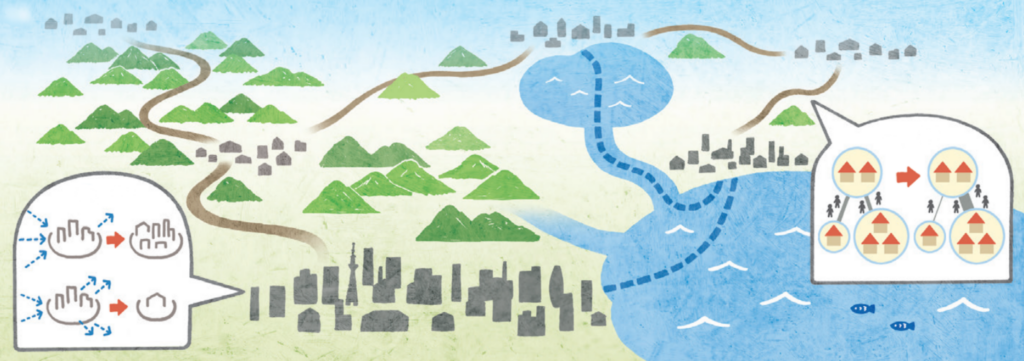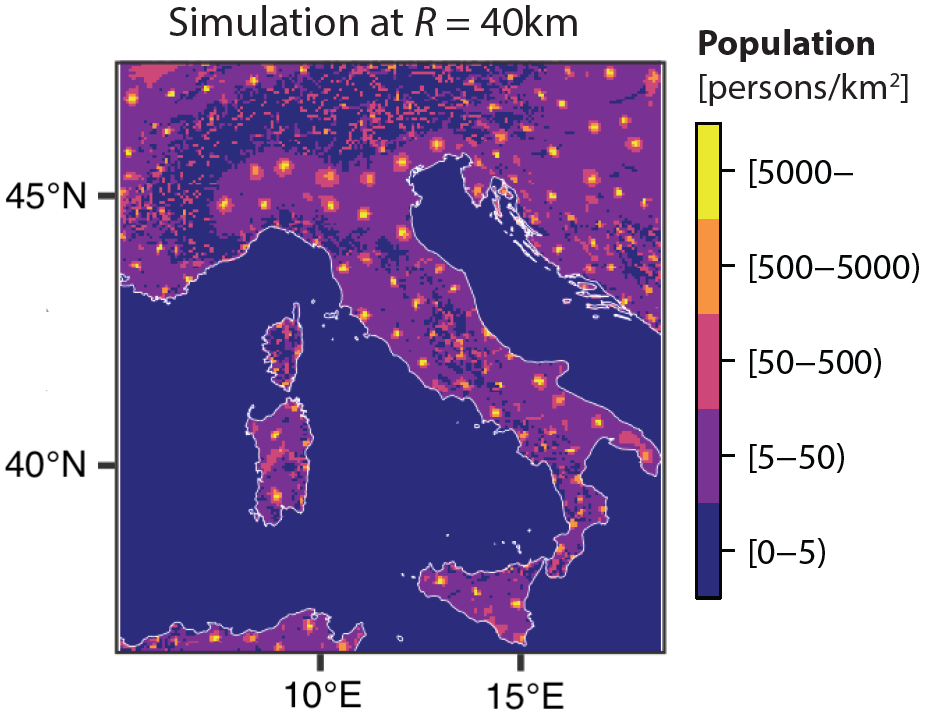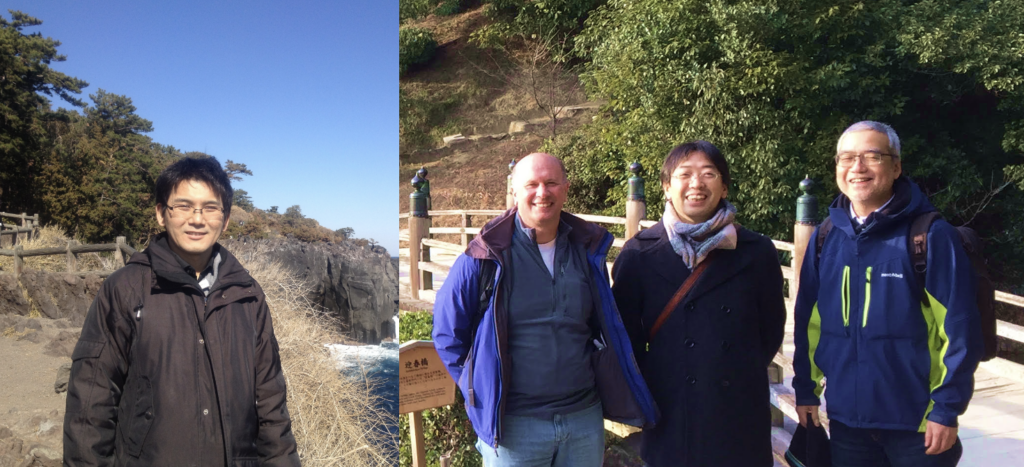All roads lead to big cities
Research Press Release | August 04, 2022
Joint release by Hokkaido University, Kagawa University and Tohoku University.
When the evolution of towns and of roads are modeled together, the natural landscape alone is enough to predict the actual arrangement of real towns.

Illustration of dynamical pattern formation in the model in this study where populated places and their inter-connections emerge naturally across the landscape. Transport links following least-cost paths across the landscape are strengthened between locations with large populations, whilst well-connected centers in turn tend to grow to a greater extent (Takaaki Aoki, et al. Scientific Reports. June 16, 2022).
The phrase “All roads lead to Rome” captures in five words how important roads are for important cities. Yet, when we think of what made some towns last and grow and others shrink and be forgotten, we often think first of cultural and political events, the climate, land productivity and geography. As a consequence, most current scientific models of how cities develop treat roads as by-products or exogenous factors and they need a large amount of socio-economic data to be able to reproduce the cities’ arrangement.
In a paper published in Scientific Reports, Kagawa University’s Takaaki Aoki, Tohoku University’s Naoya Fujiwara, Hokkaido University’s Toshiyuki Nakagaki and University of Oxford’s Mark Fricker found that all they need to explain the distribution of towns in Italy was, first, a small set of mathematical equations that explain how the population of places and the connections between them interact; and second, a map containing the relief of the considered landscape. They emphasized: “Landscape on its own is not sufficient to explain the population distribution as a form of geographical determinism, but requires the inter-dependent dynamical feedback between population and the transport network emerging in parallel.”
The computational model Aoki and his colleagues constructed is based on a grid of cells that each have a terrain and slope as well as populations. In each round of the model, the computer evaluates how the road networks between each point in the map to every other point grow or shrink depending on how popular the endpoints are; and vice versa, how the populations of each cell change as a result of how well connected it is to all other cells. The landscape enters the calculation via road networks through different kinds of terrain being more or less attractive. While these conditions alone already produce results fairly similar to the real-world distribution of towns, the researchers could further increase the accuracy by including “history” into their model, by starting their simulation with the population being distributed as in ancient Roman times and by increasing the length of typical journeys as time progressed.

The distribution of modern towns in Italy can be predicted with good accuracy by a computer model based on nothing else but the interdependence of settlement populations and road networks in the context of the natural landscape (Takaaki Aoki, et al. Scientific Reports. June 16, 2022).
However, the model the researchers developed can in no case recreate the distribution of modern towns completely accurately, with some towns being larger or smaller in the model than in reality and their locations not always matching perfectly. The researchers admit that there are many important details, such as small-scale landscape features or historical events, that would significantly increase the accuracy of their model. But they maintain that it still “provides a baseline reference tool to predict the expected population distribution when constrained solely by topography.” This is all the more remarkable since in many alternative models, the relief of the natural landscape is not even explicitly considered.
The researchers argue that, using their model as a “sophisticated null model”, future work could quantify the importance of socio-economic, environmental, and other factors that are responsible for the deviations from real-world data. Thus, they hope to pioneer “a new direction to deconstruct the complex phenomena of human civilization involving many natural and social factors.”

Authors of the current study. From the left: Naoya Fujiwara, Tohoku University; Mark Fricker, University of Oxford; Takaaki Aoki, Kagawa University; and Toshiyuki Nakagaki, Hokkaido University (Photos: Naoya Fujiwara, Takaaki Aoki).
Original Article:
Takaaki Aoki, et al. A model for simulating emergent patterns of cities and roads on real‐world landscapes. Scientific Reports. June 16, 2022.
DOI: 10.1038/s41598-022-13758-1
Funding:
This work was supported by the Research Institute for Mathematical Sciences, a joint research center at Kyoto University; the joint research with CSIS, the University of Tokyo (No. 699); Japan Society for the Promotion of Science (JSPS) KAKENHI (21H04357, JP18K11462) and Fellowship; the Human Frontier Science Program (RGP0053/2012); the Leverhulme Trust (RPG-2015-437); “Dynamic Alliance for Open Innovation Bridging Human, Environment and Materials” from the Ministry of Education, Culture, Sports, Science and Technology of Japan (MEXT); Japan Science and Technology Agency (JST) PRESTO (JPMJPR21RA).
Contacts:
Researchers
Associate Professor Takaaki Aoki
Faculty of Education
Kagawa University
Tel: +81-87-832-1595
Email: aoki.takaaki[at]kagawa-u.ac.jp
Associate Professor Naoya Fujiwara
Graduate School of Information Sciences;
Tough Cyberphysical AI Research Center
Tohoku University
Tel: +81-22-795-4346
Email: fujiwara[at]se.is.tohoku.ac.jp
Professor Mark Fricker
Department of Plant Sciences
University of Oxford
Tel: +44 1865 275015
Email: mark.fricker[at]plants.ox.ac.uk
Professor Toshiyuki Nakagaki
Research Institute for Electronic Science;
Global Station for Soft Matter, Global Institution for Collaborative Research and Education
Hokkaido University
Tel: +81-11-706-9429 / +81-11-706-9439
Email: nakagaki[at]es.hokudai.ac.jp
Institutions
Sohail Keegan Pinto (International Public Relations Specialist)
Public Relations Division
Hokkaido University
Tel: +81-11-706-2185
Email: en-press[at]general.hokudai.ac.jp
Administrative Division
Saiwai-cho Campus Supporting Center
Kagawa University
Tel: +81-87-832-1405
Email: lsoumu-c[at]kagawa-u.ac.jp
Public Relations Office
Graduate School of Information Sciences
Tohoku University
Tel: +81-22-795-4529
Email: koho[at]is.tohoku.ac.jp
Related Articles:
Two Ig Nobel laureates discuss “Research that makes people laugh and then think”
